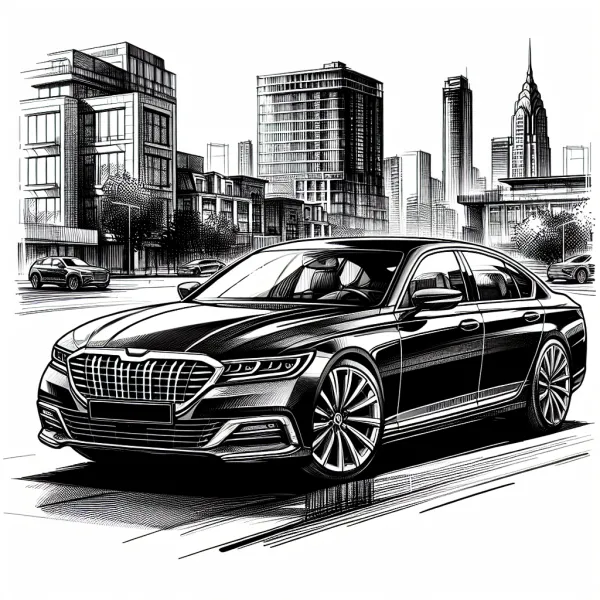Mercedes-Benz E-Class 2.0L Turbo: A Mechanic's Deep Dive into Ownership Costs and Reliability
Introduction: The Mercedes-Benz E-Class 2.0L Turbo – A Practical Look
The Mercedes-Benz E-Class 2.0L Turbo, particularly the models from 2020 onwards, represents a compelling blend of luxury, performance, and technology. It's a car often chosen by professionals, families seeking a comfortable ride, and individuals who appreciate a balance of style and practicality. However, like any vehicle, especially one with a premium price tag, it comes with its own set of realities. This article will delve into those realities, providing an experienced mechanic's perspective on ownership.
Real-World Fuel Consumption
Manufacturer specs often paint a rosy picture of fuel economy. In the real world, expect the E-Class 2.0L Turbo to achieve somewhere between 22 and 28 mpg combined, depending heavily on your driving habits. Aggressive acceleration, frequent stop-and-go traffic, and towing will significantly reduce fuel efficiency. Highway driving, on the other hand, can push it closer to the higher end of that range. The engine's turbocharger can contribute to lower fuel economy if you're constantly driving at low RPMs.
Common Problems (From a Mechanic's Perspective)
While generally well-engineered, some issues recur in the E-Class 2.0L Turbo. I've seen a fair share of problems with the air suspension, particularly on models with the optional airmatic system. Leaks and compressor failures are not uncommon, leading to hefty repair bills. The turbocharger itself, while usually quite robust, can suffer from issues if not properly maintained. Regular oil changes using the specified Mercedes-Benz oil are crucial. Ignoring this can lead to premature wear and tear on the turbo and other engine components. Another area of concern is the electrical system. Mercedes-Benz vehicles are known for their complex electronics, and glitches, sensor failures, and communication issues can arise, often requiring specialized diagnostic tools and expertise to pinpoint and fix. Finally, I've encountered some instances of issues with the transmission, particularly with rough shifting or delayed responses. These problems often necessitate a more involved repair or even a transmission overhaul.
Maintenance Costs
Maintaining a Mercedes-Benz E-Class is not cheap. An oil change, using the required synthetic oil and filter, will typically run you between $150-$250. Brake jobs can easily reach $800-$1200, depending on the parts used. Tire replacements, considering the typically larger sizes fitted to this vehicle, are another significant expense. The cost of replacing the air suspension compressor, if it fails, can range from $1500-$3000. And, let's not forget that any electrical system problems can lead to expensive diagnostic and repair fees.
Hidden Costs
Beyond the standard maintenance, there are hidden costs. Mercedes-Benz often requires specialized tools for certain repairs, which can add to the cost if you're not using a dealership. Their recommended oil is often quite expensive, and using anything else can void warranties or potentially harm the engine. The cost of genuine Mercedes parts tends to be significantly higher than third-party alternatives, though the quality difference can be notable.
Overall Reliability
Overall, the 2020+ Mercedes-Benz E-Class 2.0L Turbo's reliability is a mixed bag. While the engine and drivetrain are usually quite durable with proper maintenance, the electronic systems and air suspension can be points of failure. Regular, proactive maintenance is absolutely key to minimizing major issues and keeping the total cost of ownership manageable.
Total Cost of Ownership
This is where things get interesting. The upfront cost of buying a new E-Class is substantial. Adding in the cost of fuel, maintenance, potential repairs, and insurance, you're looking at a very expensive car to own, especially over the long term. Expect to spend significantly more than you would on a comparable vehicle from a non-luxury brand.
Resale Value
Mercedes-Benz vehicles generally hold their value relatively well, especially the E-Class. However, the rate of depreciation will depend on the vehicle's condition, mileage, and overall maintenance history. A well-maintained E-Class should sell relatively quickly, but expect some depreciation, nonetheless.
Tips for Prospective Buyers
- Thorough Pre-Purchase Inspection: A pre-purchase inspection by a trusted independent mechanic is essential. This can save you from costly surprises down the line.
- Check Maintenance Records: Scrutinize the vehicle's maintenance history. Consistent and documented maintenance is crucial.
- Test Drive Extensively: Pay close attention to how the car drives, listen for unusual noises, and check all the electronic features.
- Beware of Modified Cars: Avoid vehicles with aftermarket modifications unless you are very knowledgeable about the changes made.
- Walk Away If Necessary: If something feels off, or if the price seems too good to be true, it's best to walk away.
Alternatives
If the Mercedes-Benz E-Class 2.0L Turbo's cost of ownership concerns you, consider alternatives like the BMW 5 Series, Audi A6, or even a well-equipped Lexus ES. These offer competitive features and a generally lower total cost of ownership.
Conclusion
The Mercedes-Benz E-Class 2.0L Turbo is a desirable car, but it's important to understand the realities of owning one. It's a vehicle that demands proper maintenance and is likely to result in significant expenses. If you are prepared for the costs and are willing to commit to regular maintenance, it can be a rewarding experience. However, if you're looking for a more affordable option without sacrificing too much in terms of features and luxury, exploring alternatives is a wise decision.
